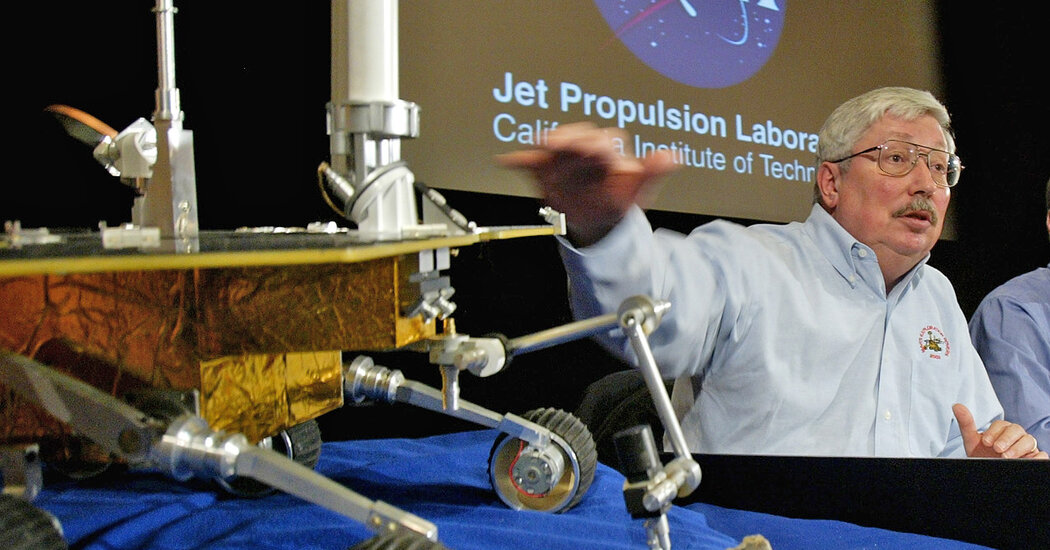He directed a team of engineers that built Spirit, Opportunity and Curiosity, mobile robots that offered astonishing glimpses into the planet’s ancient past.
Growing up in California, Peter C. Theisinger assembled model airplanes, tinkered with electronic hobby kits and operated a ham radio set. But when it came to building anything bigger than a bread box, even as an adult, he recalled, “I was never mechanical, never tried to fix my car.”
“I’m a klutz,” he said.
Belying his modesty, though, Mr. Theisinger (pronounced THIGH-sin-ger) oversaw projects for NASA and the Jet Propulsion Laboratory in California that landed three jalopy-like robotic contraptions weighing a combined 2,700 pounds on the surface of Mars, hundreds of millions of miles from Earth.
The rovers, as they were called, searched successfully in freezing deserts and mineral deposits for geological clues to whether the planet’s environment had supported water in ancient times and was therefore potentially conducive to life. They uncovered evidence of ancient hot springs that could have provided ideal habitats for microbial life billions of years ago.
The names of the rovers were chosen in a contest by schoolchildren, but the names given to the three that Mr. Theisinger supervised — the golf-cart-size twins Spirit and Opportunity, which landed on Mars in January 2004, and the larger and heavier Curiosity, which alighted in August 2012 — might just as well have described Mr. Theisinger himself.
He died at 78 on June 26 at his home in La Crescenta, Calif. The cause was throat cancer, his wife, Dona Theisinger, said.
